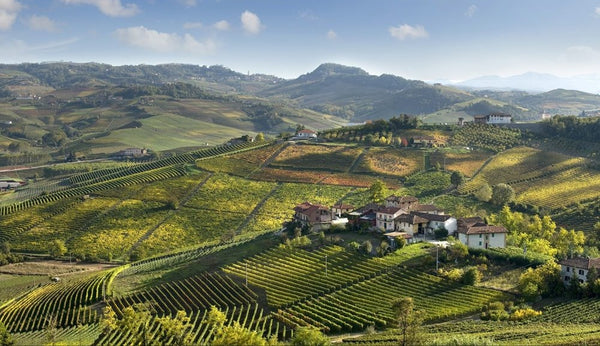
Trediberri
In 2007, Nicola Oberto, together with his father Federico and mutual friend Vladimiro Rambaldi, decided to establish a winery in the Berri area west of the famous wine village of La Morra, and thus Trediberri was born. The friends acquired 5 hectares of vineyards for the production of Barolo and four years later the farm's first wine, vintage 2010, was released. Today, in addition to the original Berri vineyards, the property owns 2 hectares in the Rocche dell'Annunziata and Torriglione areas, where grapes for Barolo, Barbera and Sauvignon Blanc are grown. In addition, they have a hectare of rented orchard in Capalot in La Morra, where they grow Nebbiolo. In 2014, a new winery was completed, and currently there are a total of 9 hectares of orchards.
Although the farm's history is short, there is certainly no shortage of know-how and passion. Federico worked for more than 30 years in the basement of his mentor Renato Ratti, and after retiring he said he would get bored if he didn't get a new project to run. His love for wine culminates in Burgundy wines and Sauvignon Blancs from the Loire. Federico tries to remind his son Nicola that wines should be easy to enjoy. Vladimiro Rambaldi arrived for the first time in La Morra in 1996 and stayed on that road. Having made his career in the banking industry, Vladimiro's passion for wines is especially focused on natural wines. Nicola regrets that she never studied to be a winemaker, but learns all the more from her father and Vladimiro, who sometimes have to correct her mistakes. Nicola loves the red wines of Chambolle-Musigny and compares the Barolo of Rocche dell'Annunziata to the famous Les Amoureuses premier cru vineyard.
The friends' view of good wine is that the bottle is quickly emptied. Their winemaking philosophy is not tied to one specific way of doing things. At the shelters, we mainly work with organic methods, but it has been decided to give up obtaining the certificate for the time being due to difficult weather phenomena and the partial destruction of crops. Organic production in the area is also hampered by the humid sea breeze, which brings fungal diseases to the gardens. Trediberri also does not intend to switch to biodynamic wine production, as biodynamic certificates are stricter than organic certificates in terms of the use of copper sulfate in nurseries. Fertilizers are not used in nurseries, but the diversity of the soil is maintained with the help of the natural vegetation found between the rows of vines. Both cement and steel tanks are used in the production of wines, depending on the year, variety and vineyard. Fermentation of the wines begins with the pied de cuve and malolactic fermentation occurs naturally. The grapes are allowed to macerate as needed and the finished wine is also allowed to mature in large oak barrels for just as little or as long as is suitable for the particular wine. The goal is to create the most balanced and drinkable wine that is clean and fresh.
All the estate's wines are decorated with colorful labels painted with watercolors, designed by Piedmontese artist Pierflavio Gallina.
The farm's annual production is around 60-65,000 bottles.
https://www.trediberri.com/en/
Come and join us in creating a better wine culture
We at Viinitie believe that Finland is ready for a better wine culture. People are thirsty for quality, responsibility and stories in more and more glasses. That's why we want to be even more torchbearers of this cultural change and make better wines available to everyone.
Join the Viinitie Grand Crew community and you are involved in making a better wine culture.
Powered by Shopify © 2025, Viinitie Oy

